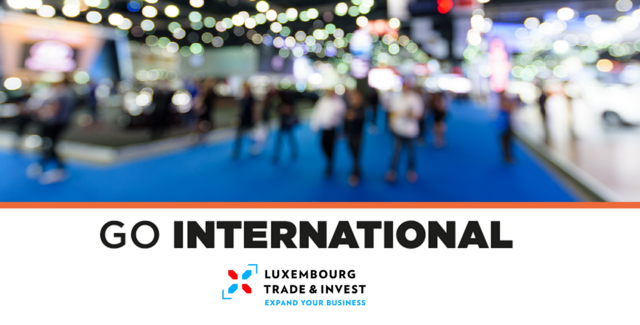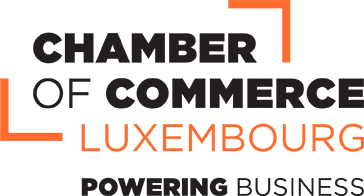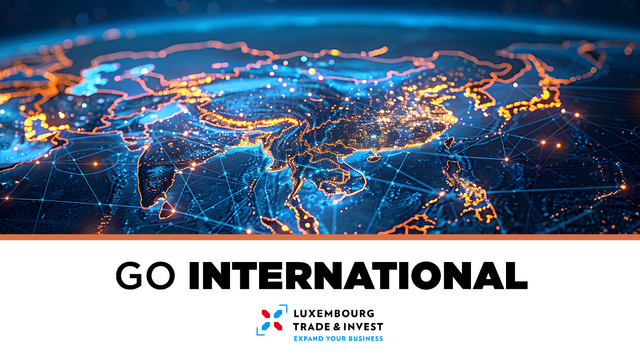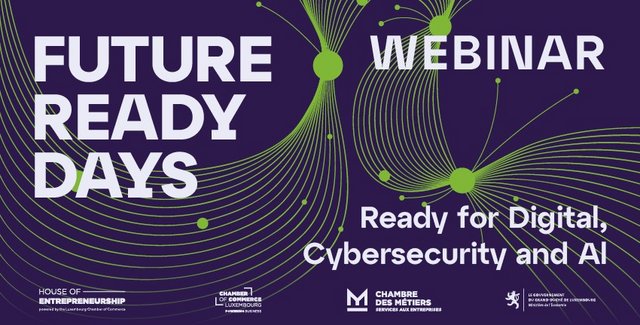

ExoAtlet is a Luxembourg-based healthtech company led by Ekaterina Bereziy that specialises in gait rehabilitation using powered hip-knee exoskeletons. These innovative medical devices are designed to help patients with locomotive impairments to regain mobility. The startup is also a leading company in the field of exorehabilitation and collaborates with research centres in Europe to accelerate ExoTechnology research, testing, and training. The company has a significant presence in Asia, Europe and the United States and is on a mission to build up an exorehabilitation ecosystem in Europe.
How did the ExoAtlet story begin?
I am a graduate of the Faculty of Mechanics and Mathematics, Lomonosov Moscow State University and I also have an MBA from the Russian Presidential Academy of National Economy and Public Administration. Our engineering team was based at Moscow State University and our scientific leader was specialised in Artificial Intelligence (AI) and was very knowledgeable in these technologies. We had robotics veterans working on robotics for over 15 years with experience in system control for wheeled and walking robots. In 2015, we worked on different technologies before we decided to set up a commercial company specialised in exoskeletons. Since we started to develop our exoskeletons, the technology has changed substantially. The batteries are lighter, more energy-dense and are not so large and heavy compared to the older batteries. In recent years, microelectronics has also improved steadily. Our dream was to help disabled people with a light and easy-to-wear structure and with long-lasting motors. The first stage was the development stage and the clinical trials. We worked with so-called ‘pilot patients’. These pioneers were ready to experiment an innovative robotic technology, with the sole objective of walking again and having a new quality of life. We did a lot of different tests before we obtained in 2016 the first medical certification in Russia. With this certification, we were able to start sales and reach a big number of hospitals and around 1,000 patients. In 2017, we set up our first company outside Russia in South Korea. As part of the certification process, the ExoAtlet exoskeleton was subject to a series of specific tests designed to confirm its load capacity, durability, fire resistance and safety. Due to its complexity, the testing protocol had to be carried out by an accredited laboratory in South Korea. Fortunately, each test was successful! Our device was awarded the CE mark, which certifies that our product complies with the essential requirements of the relevant European health, safety and environmental legislation. The CE marking certification was an extremely time-consuming and demanding process, but it granted us access to the European market. It also had a positive impact on the innovation process and strengthened the bonds in the team. As a result, the quality and user-friendliness of our exoskeleton has increased throughout the CE marking process.
Why did you choose Luxembourg to establish the European headquarters of ExoAtlet?
In 2018, the decision to establish the European headquarters in Luxembourg was driven by the country’s geographical position, as it’s an ideal location to distribute our products. Luxembourg is a small, but very progressive country with well-educated people. Luxembourg has a lot of advantages. The legislative framework is very business friendly, the country is located in-between Germany, Belgium and France and everyone speaks many languages. And especially, Luxembourg offers a fantastic social insurance coverage for disabled people. We set up an educational centre in Amsterdam, which is at a convenient distance from Luxembourg. The University of Amsterdam has its own rehabilitation centre and is launching a research programme together with us. As a next step, we are considering building a European exorehabilitation ecosystem in Luxembourg for disabled people in the world. Now that we have the certification, every hospital can use our devices and work with our exoskeletons. Currently, all hospitals are facing the same problems. When the patients leave the hospital, the rehabilitation stops! People stay at home without any special device allowing them to go on with their therapy and training. The only chance they have is to visit a physiotherapist and get a standard treatment. Moreover, if these services are well covered in Luxembourg, they are not covered in every country. We came up with the idea to start a rehabilitation programme with the Luxembourg government designed for patients who need therapy with our exoskeletons. We could set up many short pilot programmes in every physical physiotherapist facility that could be included in the government programme. After training three times a week during several months, the results are very convincing! We are ready to present how our exoskeletons work and show the positive results to make people aware that one can recover from trauma. Besides, medical tourism could expand in Luxembourg which might then also become even more attractive from this point of view.
How would you describe the mission of ExoAtlet?
We are architects of the technology-driven ecosystem for exorehabilitation. This includes partnerships with research centres, hospitals and nursing homes to advance research in the field, collaborations with universities and training in the use of exoskeletons for upcoming physical therapists. We provide recovery devices, i.e. wearable exoskeletons for adults and elderly people and soon, for children. The idea is to make exorehabilitation with the help of our exoskeletons accessible for everyone. We bring quality changes into the lives of people with locomotor disorders and provide scientists with reliable tools to empower research. ExoAtlet organises educational symposia to share the latest scientific advances with medical specialists and researchers and to provide access to a broad network of health care providers and high-tech scientists.
How are the exoskeletons manufactured and where are they currently used?
ExoAtlet is a truly international organisation and has 80 employees. The company’s headquarters are located in Luxembourg. The manufacturing of our exoskeletons is done in South Korea. Each device consists of around 500 parts that must be produced and assembled. It is a very innovative and smart system. Regulatory and safety rules must be applied, and South Korea has the ISO standards for these medical devices. Bigger countries like France and Germany have an insurance coverage for the non-mechanical rehabibilitation, but they need to develop new European standards for medical exorehabilitation. In this case, it could make sense to produce the exoskele-tons in Europe, or for instance, manufacture some parts or make the assembly in Luxembourg. But we need to develop the market first and to work on the rehabilitation programme with the Luxembourg government. We need to go fast, because the idea is now out there. Many countries are trying to drive down the huge costs that disabled people require for their rehabilitation. In some countries, they fight to keep a person alive, and if this person survives, but needs an exorehabilitation, the social security does not pay for it and the recovery process comes to an end, which is rather contradictory to the main goal!The exoskeletons are being used in over 80 medical facilities across Europe, Russia, South Korea, the Republic of Kazakhstan, India, Thailand, Turkey, Japan, Vietnam and the US. In each of these countries, ExoAtlet has successfully achieved the required product quality certifications. We are currently looking for partners in China. So far, more than 10,000 patients have gone through rehabilitation with the help of ExoAtlet devices and this number keeps growing.
How are exoskeletons used in healthcare...
ExoAtlet provides help to patients with spinal cord injuries, multiple sclerosis, cerebral palsy, traumatic brain injury, or people who have had a stroke and those recovering from arthroplasty. Exoskeletons are helpful in rehabilitation, training and therapy, helping patients recover their locomotive functions and stand for themselves. If the lower limbs don’t move for an extended period of time, the brain stops considering these as parts of the body. The exoskeleton enables patients to move more, thereby enabling a quicker recovery. When the patients walk in our exoskeletons, their leg muscles start working again. They feel better mentally as well. As a result, their overall physical health improves. It is proven that rehabilitation with exoskeletons not only helps patients to get back on their feet, but supports the immune system in general, which is essential in these difficult times of the pandemic. 61% of the disabled people who are put back on their feet have an increase in lung capacity, better blood circulation and improved gastrointestinal function. Moreover, for 38% of the patients, spasticity diminishes after a few training sessions, which leads to an improvement in their overall health condition. We provide the exoskeletons to hospitals. We do the training, and we connect all hospitals with each other to collaborate and exchange best practices and to receive feedback.
...and how is a patient evaluated to use the ExoAtlet device?
In order to be eligible for ExoAtlet, a patient needs to bring a medical release. Then, a comprehensive physical evaluation is conducted. During this evaluation, our physical therapist examines key requirements for use including range of motion, muscle strength and spasticity. ExoAtlet is for people with lower-extremity paralysis or weakness who want assistance to stand up and walk. Users need arm function and adequate upper extremity strength to manage crutches or a walker as determined during the evaluation.
Are ExoAtlet-powered exoskeletons customised to match the specific needs of each patient?
Our exoskeletons have motors (or drives) located on the hips and the knees. When these drives power up, they move the patient’s legs in a way that is similar to a natural gait. ExoAtlet allows the patient to walk on stairs and other uneven surfaces. The speed and power level can either be chosen by the patient in compliance with his doctor's recom-mendations or determined by a pre-designed programme that is developed with the med-ical staff to match the unique conditions of each patient. We developed real-time progress reporting, called the ExoCloud. This platform provides doctors with stored data on training sessions and gives them the opportunity to analyse the data so that they can adjust the exorehabilitation sessions to be more efficient and better adapted to the patient’s needs. The device weighs approximately 20 kg and is designed for everyone, not only the average person. It can lift a patient who weighs up to 100 kg! It takes less than 10 minutes to adjust, no specific tools are required. ExoAtlet offers 13 anthropometric settings that optimise human inter-action with equipment. The users stand on device which rests on the ground.
Have you participated in fairs and economic missions or taken part in any competitions?
In 2019, ExoAtlet attended MEDICA, the world’s largest event for the medical sector. It attracts several thousand exhibitors from more than 50 countries in Düsseldorf, Germany. This mission was conducted by the Cham-ber of Commerce and was very helpful for us.In 2020, our team participated in the 4th China-Jiaxing ‘Red Boat Cup’, China’s 1st overseas top talent innovation contest! The competition is divided into four special categories: digital economy, life and health, advanced manufacturing, new energy and new mate-rials. Our team prepared for the competition for six months. More than 100 technology enterprises covering 40 countries and regions around the world competed together and our team won 3rd place! That same year, we took part in the Cybathlon, a multi-sport event and an international competition in which people with physical disabilities compete against each other to complete everyday tasks using state-of-the-art technical assistance systems. 51 teams from 20 countries competed against each other, completing everyday tasks with the help of state- of-the-art assistance systems. Every team had developed a very unique and complex project, in order to win the competition, but none of the systems were secure as they had not been tested properly and sufficiently. We were the only team using the same standard exoskeleton, which reflects what we do. We were able to compete and get realistic feedback. This competition had a positive impact in our capacity to launch reliable equipment in the market. We will be at Arab Health 2022 on the national pavilion organised by the Chamber of Commerce. Arab Health is the leading medical equipment exhibition in the Middle East showcasing the latest innovations in healthcare.
Exoskeletons are not just used for medical purposes. Are you targeting a broader market?
Broadly speaking, there are two types of exoskeletons. The medical exoskeletons developed by ExoAtlet are designed to help the user restore and compensate for lost abilities. The other type of exoskeleton can be used in the industrial sector. ExoAtlet doesn’t provide exoskeletons designed to magnify the physical strength of the operator, but we have the technology and equipment to help industrial workers lift heavy things off the floor, without damaging their spinal cord or causing back injuries. Our product is called the ExoAtlant Torso, which is a light unpowered industrial exoskeleton for lumbar spine. ExoAtlant Torso provides gravity support and spreads the weight the right way. It reduces lower back strain during twisting, bending, and weight lifting by approximately 60%. This equipment can be easily manufactured. If we find the right partners, we are open to any proposal to develop additional activities. Advanced exoskeleton models can be controlled by the patient’s thoughts.
Is this something you wish to develop?
Patients can control the level of support they receive from the exoskeleton through various types of control systems. These include tablets, buttons on the control handles or smart crutches. The most advanced solutions allow the patients to activate the exoskeleton purely through their thoughts. This type of control promotes an even better neural plasticity - which refers to the capacity of the nervous system to modify itself, functionally and struc-turally, in response to experience and injury - and therefore speeds up recovery. ExoAtlet is currently collaborating on brain-controlled interfaces with leading neuroscientists in Europe and the United States.
What are your future prospects and next development projects?
In 2022, we will be able to deliver a paediatric version for children with cerebral palsy or congenital neurological disorders to learn how to walk again, and children who have sustained an injury to restore their walking skills. We are currently working on this project called ExoAtlet Bambini, one of the first exoskeletons for toddlers and children in the world! The ExoAtlet Bambini is designed for children who are 115 to 155 cm tall. A child can catch up on all functions like writing or talking, once it recovers its walking function. Walking ability is related to improved cognitive and executive function.We have another project regarding elderly people who wish to prolong their active life and feel safe, while walking in their everyday lives. ExoAtlet is an interesting device for their personal image and self-esteem as it gives them the ability to do more movements and be more independent. Our product is sold at a price of EUR 95,000 per unit. So far there are over 130 exoskeletons produced by ExoAtlet. We are able to produce 20 at a time. The creation of a franchise system in partnership with a leasing company could be an interesting avenue to explore. The exoskeleton could be shared: either rented or paid for when used. We centralise requests from hospitals before going into production. For specific requests, we deliver the finished product as needed. The idea behind this is to help and offer medical services, not to mass produce exoskeletons.
What is your dream as an entrepreneur?
I consider my role as an entrepreneur as a mission. The future is collaboration, not competition! I left a high-paying management position in Russia to focus on ExoAtlet and provide access to the technology for all needs. My dream is that one day everyone sees ExoAtlet as a happy journey.
TEXT Marie-Hélène Trouillez - PHOTOS Matthieu Freund-Priacel / Primatt Photography ; ExoAtlet















